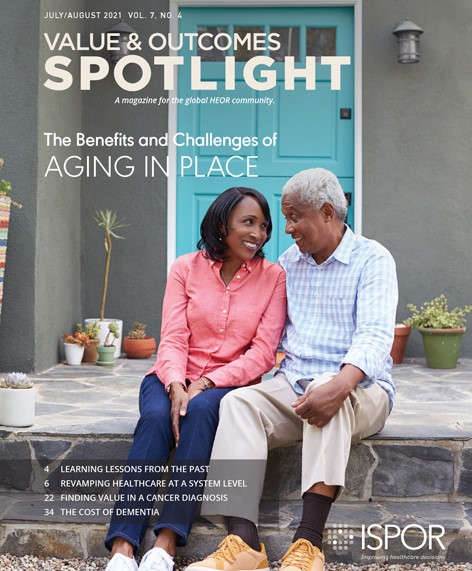The Value of Aging in Place
As a child, I thought that everyone in their 40s was “old.” I saw many grandparents of my generation living in nursing homes which, at the time, was the norm and almost expected once someone became a certain age. When I became 40 years old, I could not believe time had passed so quickly as I fundamentally felt much younger than the years implied. After all, age is but a number and should not be an indicator of how one expects to live one’s life. As a society, we need to “rethink” how we think about aging.
Today, more and more older adults want to stay at home and grow older in the comfort of their homes and communities. According to a 2018 Home and Community Preferences survey by the American Association of Retired Persons (AARP), approximately three-quarters of Americans who are 50 years or older want to reside in their own home for as long as feasibly possible, even if assistance is necessary for them to continue their daily activities. They want to be independent, but are concerned about their safety, mobility at home and around their communities, keeping their medical appointments, and participating in other daily activities that those of a younger age take for granted. For this population, these concerns are valid and should be addressed to better allow individuals to age in their own homes.
Studies have shown that, by addressing these issues and making the appropriate changes, the economics are improved because often the cost of care at home is lower compared to the cost of care in a senior living community or skilled nursing facility. On the other hand, aging in place may not be an option for adults who want to be independent but who are challenged with physical, emotional, or cognitive issues that can interfere with their daily activities and their ability to function independently. In these situations, nursing homes, senior living communities, or skilled nursing facilities may be better options. Long-term care systems are challenged when deciding on which services should be covered.
In this issue, Rapp and Swartz highlight implementing a value-based approach to living in place versus traditional long-term care that would promote coverage of care options that provide the greatest benefits to frail persons and their informal caregivers at the lowest cost to the system. The importance of caregiver voice in healthcare, drug development, and value assessment should also not be overlooked. The article by Vurgun and colleagues point out that establishing family caregiver roles early on when developing treatment options provides a better understanding of and data collection around those roles; the improvements in both the health and well-being of the caregiver and patient; and the potential reduction in healthcare costs. More research is needed to show that aging in place can be beneficial by yielding cost-effective outcomes and better quality of life, reducing the burden on informal caregivers, and realizing an overall reduction in medical spending.
Lastly, everyone at Value & Outcomes Spotlight would like to thank Laura T. Pizzi, PharmD, MPH, who will be moving on from her role as Co-Editor-in-Chief and will be taking on another role within ISPOR as Associate Chief Science Officer. I want to personally thank Laura for her support and leadership as my Co-Editor and wish her the best in her new and exciting role.
As always, I welcome any and all input from our readers. Please feel free to email me at zeba.m.khan@hotmail.com.

Zeba M. Khan, RPh, PhD
Editor-in-Chief, Value & Outcomes Spotlight
Explore Related HEOR by Topic

